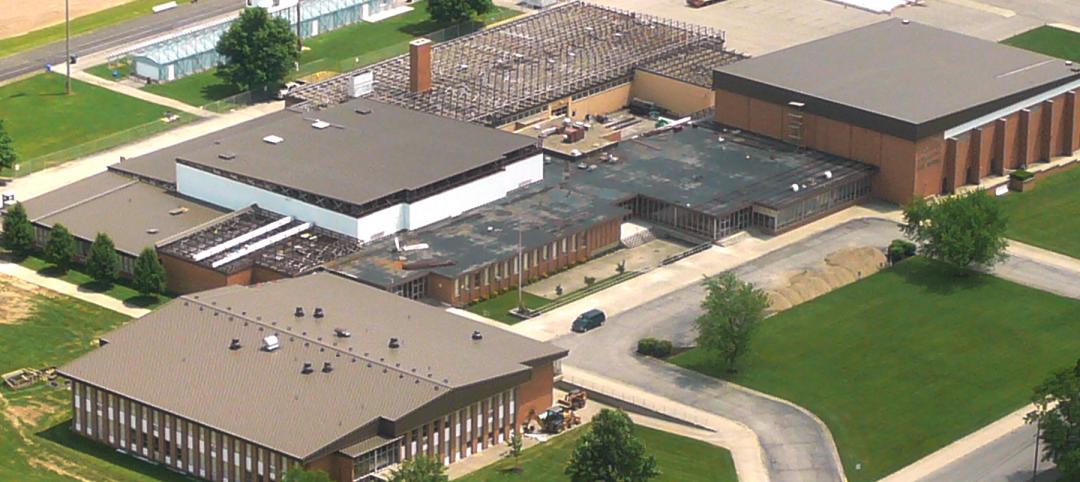Within the next five years, the AE firm SmithGroup wants to be able to incorporate the highest level of energy efficiency into every project it designs and builds. But the challenge is selecting the right energy model from literally thousands of options.
“The number of buildings we need to touch, and the pace we need to do it, exceed what an individual could do in a lifetime,” says Stet Sanborn, engineering lead in SmithGroup’s San Francisco office.
To speed this process, SmithGroup has partnered with the U.S. Department of Energy’s Oak Ridge National Laboratory (ORNL), whose Automated Building Energy Modeling software suite, better known as AutoBEM, has simulated the energy use of 123 million structures, or 98 percent of U.S. Buildings.
AutoBEM was developed using high-performance computing to process layers of imaging data with information about each building, such as its size, use, construction materials, and HVAC technologies. The goal was to create a digital twin of the nation’s buildings, says Joshua New, ORNL’s project leader.
Sanborn tells BD+C that SmithGroup got involved with this technology collaboration project 18 months ago, after responding to the lab’s request for proposal. After six months of planning, SmithGroup provided information for every building type it handles, including climate zones, footprints, orientation, and envelope construction. The modeling also took into account lighting and HVAC variations.
This project generated more than 200,000 building iterations and 250,000 energy models. The computation, which took less than an hour to complete, was equal to the output of one employee working full time for 365 years.
Using AI to spot trends
AutoBEM’s information was used to train an artificial intelligence tool that will allow SmithGroup to pre-simulate the energy impact of every design possibility for any building.
Sanborn says that these data sets are still pretty rudimentary, so they should benefit from ORNL’s plans to update its information this year. “We’re looking for much better resolution, so we can eventually have real-time and predictive feedback,” he explains.
In 2023, SmithGroup plans to train the AI bots to spot trends and choose the best energy-efficient iteration for a given project. Sanborn says his team has already been surprised by how the data has highlighted “the interaction of things” like glass U-values and wall R-values. More refined data, he predicts, should make these data sets more accessible and actionable. (Sanborn says that SmithGroup already has pre-simulated climate data for every market it builds in.)
The first new designs for which this energy modeling is likely to be applied could be for a civic or higher education building, says Sanborn, where no restrictions to sharing information exist.
ORNL’s partners such as SmithGroup and Google—which is using AutoBEM to improve its free Environmental Insights Explorer tool—have committed to sharing data sets created by using AutoBEM. Some data sets have already been posted, and Sanborn thinks that open-source access is important because “SmithGroup can’t build every building, as much as we’d like to. We don’t want to hold a secret sauce or limit everyone’s ability to drive efficiency in response to what is really a climate emergency.”
SmithGroup participated in the funding of AutoBEM, whose development, expansion and collaborations are also funded by DOE’s Office of Electricity, the Energy Efficiency and Renewable Energy’s Building Technologies Office and the National Nuclear Security Administration. The research team leveraged supercomputing resources from Argonne National Laboratory.
Related Stories
| May 21, 2012
Winchester High School receives NuRoof system
Metal Roof Consultants attended a school board meeting and presented a sloped metal retrofit roof as an alternative to tearing off the existing roof and replacing it with another flat roof.
| May 16, 2012
AEG releases 3D video of L.A.'s Farmers Field
The Los Angeles Convention Center footage depicts the new convention center hall spaces, including a new lobby above Pico Boulevard, pre-function space, and what will be the largest multi-purpose ballroom in Los Angeles.
| May 15, 2012
SAGE Electrochromics to become wholly owned subsidiary of Saint-Gobain
This deal will help SAGE expand into international markets, develop new products and complete construction of the company’s new, state-of-the-art manufacturing facility in Faribault, Minn.
| May 14, 2012
Plumbing research coalition to study drainline transport issue
The effort is aimed at determining if decreasing levels of water flow––caused by increasingly efficient plumbing fixtures––are sufficient to clear debris from plumbing pipes.
| May 14, 2012
Adrian Smith + Gordon Gill Architecture design Seoul’s Dancing Dragons
Supertall two-tower complex located in Seoul’s Yongsan International Business District.
| May 11, 2012
Betz promoted to senior vice president for McCarthy’s San Diego Office
He will oversee client relations, estimating, office operations and personnel as well as integration of the company’s scheduling, safety and contracts departments.
| May 10, 2012
Chapter 6 Energy Codes + Reconstructed Buildings: 2012 and Beyond
Our experts analyze the next generation of energy and green building codes and how they impact reconstruction.
| May 9, 2012
International green building speaker to keynote Australia’s largest building systems trade show
Green building, sustainability consultant, green building book author Jerry Yudelson will be the keynote speaker at the Air-Conditioning, Refrigeration and Building Systems (ARBS) conference in Melbourne, Australia.
| May 9, 2012
Tishman delivers Revel six weeks early
Revel stands more than 730 feet tall, consists of over 6.3 milliont--sf of space, and is enclosed by 836,762-sf of glass.
| May 9, 2012
Construction Defect Symposium will examine strategies for reducing litigation costs
July event in Key West will target decision makers in the insurance and construction industries.

















